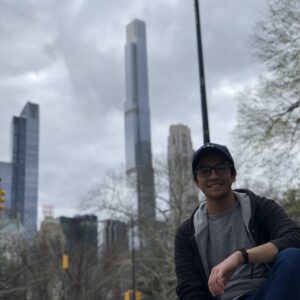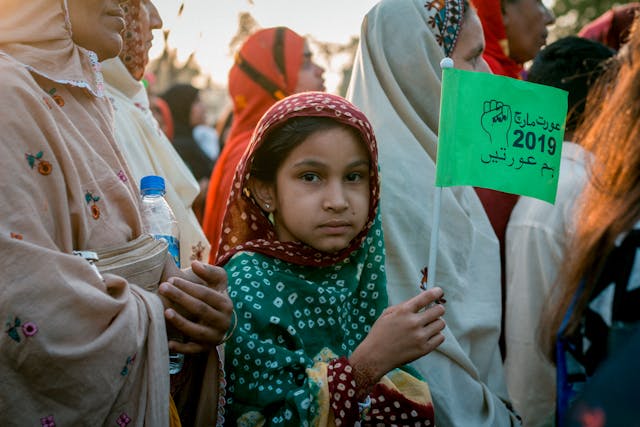The ideological standings of Iran and Saudi Arabia are starkly in opposition. Moreover, from a neo-realist view, Iran and Saudi Arabia are countries of the Middle East with great oil reserves and, therefore, greater access to profit and power. The proxy wars between the two countries, then, are primarily politico-economic in nature.
Shia-Sunni hostility among the masses is the manipulation of an aggressive sectarian rhetoric, radically propagandized to disguise the actual power struggle between the two states to obtain hegemony in the region.
Two cold wars
Iran and Saudi Arabia, despite having openly voiced their enmity at times, have never fought a war directly. They, however, engage in proxy wars in other countries. For example, receiving official and unofficial backing from Tehran and Riyadh, Afghanistan and Pakistan have infused sectarian spirit in their religious circles and state institutions.
Afghanistan and Pakistan also acted as battlegrounds for the Cold War between USSR and USA. Entangled in these two ‘power struggles’ at one and the same time, the two countries practically became hotbeds of radical organizations, imbibed with the spirit of anti-Shi’ism or Sunnism on one hand, and of anti-Communism on the other.
The inflow of aid
After its 1979 revolution, Iran became outright hostile towards Saudi Arabia and the U.S. – who had grown a rather close alliance. To subdue Iranian aggression, they mobilized funds in different countries.
The timing was perfect; Kremlin had also entered Afghanistan. Saudi Arabia, which considered Communism a threat to its monarchy, now had further backing from the U.S. to promote its Wahhabi doctrine in other countries to increase its power in the region and fight off the Soviets.
The U.S., similarly, injected vast amounts of funds into the region, facilitating the training of armed troops to counter the Russians. For example, from 1982 to 2010, the U.S. “provided $17 billion in military assistance” to Pakistan for carrying out military operations in Afghanistan (Haider, 2012).
Apart from financial and military backing, the U.S. funds were used to devise the system of education and arms training in Pakistan “to prepare for and recruit warriors in the jihad” (Nawaz, 2020; see also Hiro, 2020). Funding directed towards indoctrination and military training for the Cold War would eventually lay the foundation of radical organizations, which would later become part of terrorist networks that exist even today.
For the U.S., the indoctrination of radical Sunnism in the Pak-Afghan region was also profitable: it not only imbibed people with a spirit to fight the communists, but also promoted Saudi influence in the Middle Eastern region (against Iran). Indeed, it was a strike to kill two birds with one stone.
Retaliation upon retaliation
The belligerent Ayatollah of Iran also condemned the Russian invasion. He encouraged the Revolutionary Council of the Islamic Union of Afghanistan to resist the invasion and “set up” their own government. Indeed, Iran was inciting Afghan Shias “to unite.” Hizb-e-Wahdat (a Shia militia) and militant training of the Persian-speaking Tajik faction were the fruits of Iran’s meddling in Afghanistan. Together, they became the Northern Alliance in the 1990s, being backed by Tehran (Hiro, 2020).
At the same time, Pakistan and Saudi Arabia financed Sunni groups to counter the influence of Shias in Afghanistan. The sectarian divide widened in the region. Even though the US-USSR Cold War was over, the Iran-Saudi one was not.
During the 1980s, Pakistan’s assimilation of Sunni Islamism induced a backlash from the Shia community. Vitalized by the Iranian Revolution, Pakistani Shias retaliated and established Tehrik-e-Nifaz-Fiqh-e-Jaafria (TNFJ or TJP) to assert their religious identity.
Iran at the time was funding Pakistani Shias with “large sums of money” and “opened cultural centres” there (Zahab, 2002). As a Sunni response, Sipah-e-Sahaba Pakistan (SSP) was created in 1985. With the “assassinations of sectarian leaders,” Shia-Sunni rifts started exploding, and Pakistan became a prima facie battleground for the Iran-Saudi power struggle (Hiro, 2020).
The SSP and TJP, later, “entered into electoral alliances with the PPP or PML” (Zahab, 2002) – sowing seeds of sectarianism in the veins of Pakistan’s mainstream socio-political spheres. According to sources, SSP created Lashkar-e-Jhangvi (L.J.) and TJP formed Sipah-e-Muhammad Pakistan (SMP) in the 1990s as their militant wings (Zahab, 2002).
Terrorism and Proxy Wars
Taliban, which became organized during these proxy wars, have “one foot in Pakistan and one foot in Afghanistan” (Zahab, 2002). It has carried out terrorist acts around the world.
Many networks, essentially formed for the power struggle of Iran and Saudi Arabia and imbibed with the rhetoric of the Shia-Sunni clash, are ready-to-hire proxy militants. Partly owing to other countries’ proxy wars, sectarianism became the order of the day in the Pak-Afghan region.
As Noam Chomsky put it, “Everyone’s worried about stopping terrorism. Well, there’s really an easy way: stop participating in it” (Junkerman, 2002).
References
Gul, I. (2010). Transnational International Networks. International Review of the Red Cross, 92(880), 899-923. https://doi.org/10.1017/S1816383111000129
Haider, M. (2012). Can Pakistan survive without U.S. aid? Dawn. https://www.dawn.com/news/695692/can-pakistan-survivewithout-us-aid
Hiro, D. (2020). Cold War in the Islamic World: Saudi Arabia, Iran and the Struggle for Supremacy. C. Hurst & Co.
Junkerman, J. (2002). Power and terror: Noam Chomsky in our times [Documentary]. New York: Siglo. http://www.cine.co.jp/powerandterror/
Nawaz, S. (2020). The Battle for Pakistan: The Bitter US Friendship and a Tough Neighbourhood. Liberty Publishing. https://shujanawaz.com/2021/01/the-battle-for- pakistan/
Zahab, M. A. (2002). The Regional Dimensions of Sectarian Conflict in Pakistan. In C. Jaffrelot (Ed.), Pakistan: Nationalism Without a Nation (pp. 115-130). Zed Books.






